Blogs
How to Diagnose a Stress Fracture
 A stress fracture in the foot is often referred to as a hairline fracture. It generally develops gradually, and can come from repetitive overuse. Many runners experience stress fractures, and this can cause severe pain and discomfort while running or jogging. Additionally, they may happen if medical conditions exist, which can consist of osteoporosis, bunions, or tendonitis. This condition is generally diagnosed by having a physical examination performed, which may include having an X-ray taken. Many stress fractures will heal over time when the affected foot is elevated and the activity that caused the condition is temporarily ceased. It is beneficial to wear shoes that are supportive, in addition to protecting the feet. If you feel you have endured a stress fracture of the foot, it is suggested that you speak with a podiatrist who can guide you toward correct treatment options.
A stress fracture in the foot is often referred to as a hairline fracture. It generally develops gradually, and can come from repetitive overuse. Many runners experience stress fractures, and this can cause severe pain and discomfort while running or jogging. Additionally, they may happen if medical conditions exist, which can consist of osteoporosis, bunions, or tendonitis. This condition is generally diagnosed by having a physical examination performed, which may include having an X-ray taken. Many stress fractures will heal over time when the affected foot is elevated and the activity that caused the condition is temporarily ceased. It is beneficial to wear shoes that are supportive, in addition to protecting the feet. If you feel you have endured a stress fracture of the foot, it is suggested that you speak with a podiatrist who can guide you toward correct treatment options.
Activities where too much pressure is put on the feet can cause stress fractures. To learn more, contact Dr. Dean D. Hinners from Illinois. Our doctor can provide the care you need to keep your pain free and on your feet.
Dealing with Stress Fractures of the Foot and Ankle
Stress fractures occur in the foot and ankle when muscles in these areas weaken from too much or too little use. The feet and ankles then lose support when walking or running from the impact of the ground. Since there is no protection, the bones receive the full impact of each step. Stress on the feet can cause cracks to form in the bones, thus creating stress fractures.
What Are Stress Fractures?
Stress fractures occur frequently in individuals whose daily activities cause great impact on the feet and ankles. Stress factors are most common among:
- Runners
- People affected with Osteoporosis
- Tennis or basketball players
- Gymnasts
- High impact workouts
Symptoms
Pain from the fractures occur in the area of the fractures and can be constant or intermittent. It will often cause sharp or dull pain with swelling and tenderness. Engaging in any kind of activity which involves high impact will aggravate pain.
If you have any questions please feel free to contact one of our offices located in Metropolis and Eldorado, IL . We offer the newest diagnostic and treatment technologies for all your foot and ankle needs.
What Is a Foot Contusion?
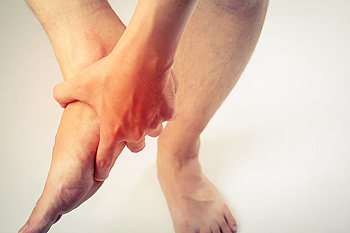 A foot contusion is another term for a bruise on the foot. This is typically a mild injury that occurs as a result of a direct impact to the foot. For example, you may develop a foot contusion after dropping a heavy piece of furniture on your foot or after getting kicked in the foot during a soccer match. The bruising and swelling characteristic of this injury is caused by small, damaged blood vessels leaking blood underneath the skin. Though contusions can sometimes look serious and cause discomfort or pain, they are usually not serious and get better without medical treatment. However, if you notice that the bruising, swelling, or pain is getting worse over time, or if you have trouble bearing weight on the foot, then it is suggested that you see a podiatrist, who can determine if you have a more serious injury.
A foot contusion is another term for a bruise on the foot. This is typically a mild injury that occurs as a result of a direct impact to the foot. For example, you may develop a foot contusion after dropping a heavy piece of furniture on your foot or after getting kicked in the foot during a soccer match. The bruising and swelling characteristic of this injury is caused by small, damaged blood vessels leaking blood underneath the skin. Though contusions can sometimes look serious and cause discomfort or pain, they are usually not serious and get better without medical treatment. However, if you notice that the bruising, swelling, or pain is getting worse over time, or if you have trouble bearing weight on the foot, then it is suggested that you see a podiatrist, who can determine if you have a more serious injury.
Foot and ankle trauma is common among athletes and the elderly. If you have concerns that you may have experienced trauma to the foot and ankle, consult with Dr. Dean D. Hinners from Illinois. Our doctor will assess your condition and provide you with quality foot and ankle treatment.
Foot and ankle trauma cover a range of injuries all over the foot; common injuries include:
- Broken bones
- Muscle strains
- Injuries to the tendons and ligaments
- Stress fractures
Symptoms
Symptoms of foot and ankle injuries vary depending on the injury, but more common ones include:
- Bruising
- Inflammation/ Swelling
- Pain
Diagnosis
To properly diagnose the exact type of injury, podiatrists will conduct a number of different tests. Some of these include sensation and visual tests, X-rays, and MRIs. Medical and family histories will also be taken into account.
Treatment
Once the injury has been diagnosed, the podiatrist can than offer the best treatment options for you. In less severe cases, rest and keeping pressure off the foot may be all that’s necessary. Orthotics, such as a specially made shoes, or immobilization devices, like splints or casts, may be deemed necessary. Finally, if the injury is severe enough, surgery may be necessary.
If you have any questions, please feel free to contact one of our offices located in Metropolis and Eldorado, IL . We offer the newest diagnostic and treatment technologies for all your foot care needs.
Five Tips for Everyday Foot Care
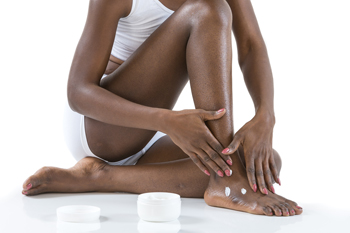 As the foundation of your body, your feet play an important role in helping you go about your day. But despite their importance, we often neglect our feet, increasing our risk of developing various foot problems. Taking small steps every day to care for your feet can help keep them healthy. Wearing comfortable, properly fitted shoes can help prevent problems such as hammertoes, corns, calluses, blisters, ingrown toenails, and general foot pain. Wearing socks can keep excess moisture off your feet, and pad the foot, preventing excess wear and tear. Taking walks regularly helps strengthen the muscles of the feet. Finally, washing and drying the feet thoroughly can help prevent foot odor and fungal infections, while moisturizing the feet can prevent dry and cracked heels. For more information about everyday foot care, please consult with a podiatrist.
As the foundation of your body, your feet play an important role in helping you go about your day. But despite their importance, we often neglect our feet, increasing our risk of developing various foot problems. Taking small steps every day to care for your feet can help keep them healthy. Wearing comfortable, properly fitted shoes can help prevent problems such as hammertoes, corns, calluses, blisters, ingrown toenails, and general foot pain. Wearing socks can keep excess moisture off your feet, and pad the foot, preventing excess wear and tear. Taking walks regularly helps strengthen the muscles of the feet. Finally, washing and drying the feet thoroughly can help prevent foot odor and fungal infections, while moisturizing the feet can prevent dry and cracked heels. For more information about everyday foot care, please consult with a podiatrist.
Everyday foot care is very important to prevent infection and other foot ailments. If you need your feet checked, contact Dr. Dean D. Hinners from Illinois. Our doctor can provide the care you need to keep you pain-free and on your feet.
Everyday Foot Care
Often, people take care of their bodies, face and hair more so than they do for their feet. But the feet are a very important aspect of our bodies, and one that we should pay more attention to. Without our feet, we would not be able to perform most daily tasks.
It is best to check your feet regularly to make sure there are no new bruises or cuts that you may not have noticed before. For dry feet, moisturizer can easily be a remedy and can be applied as often as necessary to the affected areas. Wearing shoes that fit well can also help you maintain good foot health, as well as making it easier to walk and do daily activities without the stress or pain of ill-fitting shoes, high heels, or even flip flops. Wearing clean socks with closed shoes is important to ensure that sweat and bacteria do not accumulate within the shoe. Clean socks help to prevent Athlete’s foot, fungi problems, bad odors, and can absorb sweat.
If you have any questions please feel free to contact one of our offices located in Metropolis and Eldorado, IL . We offer the newest diagnostic and treatment technologies for all your foot and ankle needs.
Choosing the Right Shoes for Toddlers
 It’s important to know that shoes for toddlers and shoes for older children are not the same. The final foot bone is only beginning to form at about 3 years of age, and feet will not be fully developed until the teen years. It’s wise to choose shoes for toddlers that offer proper support, and make sure the child’s feet are accurately measured in both length and width. Although the shoes should be lightweight, they also should have a sturdy, flat sole. Because a small child’s foot grows so rapidly, it is suggested to replace shoes every three months to ensure they fit correctly. Seeing a podiatrist for information on the best shoes for your baby is recommended.
It’s important to know that shoes for toddlers and shoes for older children are not the same. The final foot bone is only beginning to form at about 3 years of age, and feet will not be fully developed until the teen years. It’s wise to choose shoes for toddlers that offer proper support, and make sure the child’s feet are accurately measured in both length and width. Although the shoes should be lightweight, they also should have a sturdy, flat sole. Because a small child’s foot grows so rapidly, it is suggested to replace shoes every three months to ensure they fit correctly. Seeing a podiatrist for information on the best shoes for your baby is recommended.
The health of a child’s feet is vital to their overall well-being. If you have any questions regarding foot health, contact Dr. Dean D. Hinners of Illinois. Our doctor can provide the care you need to keep you pain-free and on your feet.
Tips for Keeping Children's Feet Healthy
- Make sure their shoes fit properly
- Look for any signs of in-toeing or out-toeing
- Check to see if they have Clubfoot (condition that affects your child’s foot and ankle, twisting the heel and toes inward) which is one of the most common nonmajor birth defects.
- Lightly cover your baby’s feet (Tight covers may keep your baby from moving their feet freely, and could prevent normal development)
- Allow your toddler to go shoeless (Shoes can be restricting for a young child’s foot)
- Cut toenails straight across to avoid ingrown toenails
- Keep your child’s foot clean and dry
- Cover cuts and scrapes. Wash any scratches with soap and water and cover them with a bandage until they’ve healed.
If you have any questions, please feel free to contact one of our offices located in Metropolis and Eldorado, IL . We offer the newest diagnostic and treatment technologies for all your foot care needs.
Treatments for Sweaty Feet
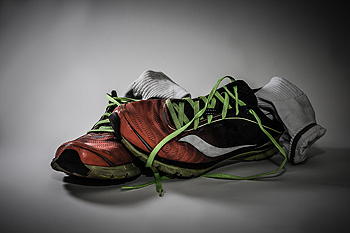 Sweaty feet is a common condition that most people find uncomfortable, and it’s often associated with an unpleasant odor in addition to a soggy feeling in the shoes and socks. Wet feet often lead to problems such as fungal infections, usually stemming from bacteria that live in warm and moist areas. Synthetic shoes socks may possibly make this condition worse, so it’s advised to wear cotton socks and leather shoes or sandals. It’s important to change your socks often and walking barefoot whenever possible may also help allow your feet to breathe. Please consult with a podiatrist if you have questions about hyperhidrosis of the feet.
Sweaty feet is a common condition that most people find uncomfortable, and it’s often associated with an unpleasant odor in addition to a soggy feeling in the shoes and socks. Wet feet often lead to problems such as fungal infections, usually stemming from bacteria that live in warm and moist areas. Synthetic shoes socks may possibly make this condition worse, so it’s advised to wear cotton socks and leather shoes or sandals. It’s important to change your socks often and walking barefoot whenever possible may also help allow your feet to breathe. Please consult with a podiatrist if you have questions about hyperhidrosis of the feet.
If you are suffering from hyperhidrosis contact Dr. Dean D. Hinners of Illinois. Our doctor can provide the care you need to attend to all of your foot and ankle needs.
Hyperhidrosis of the Feet
Hyperhidrosis is a rare disorder that can cause people to have excessive sweating of their feet. This can usually occur all on its own without rigorous activity involved. People who suffer from hyperhidrosis may also experience sweaty palms.
Although it is said that sweating is a healthy process meant to cool down the body temperature and to maintain a proper internal temperature, hyperhidrosis may prove to be a huge hindrance on a person’s everyday life.
Plantar hyperhidrosis is considered to be the main form of hyperhidrosis. Secondary hyperhidrosis can refer to sweating that occurs in areas other than the feet or hands and armpits. Often this may be a sign of it being related to another medical condition such as menopause, hyperthyroidism and even Parkinson’s disease.
In order to alleviate this condition, it is important to see your doctor so that they may prescribe the necessary medications so that you can begin to live a normal life again. If this is left untreated, it is said that it will persist throughout an individual’s life.
A last resort approach would be surgery, but it is best to speak with your doctor to find out what may be the best treatment for you.
If you have any questions please feel free to contact one of our offices located in Metropolis and Eldorado, IL . We offer the newest diagnostic and treatment technologies for all your foot and ankle needs.
Choose the Right Running Shoe For You
One of the bes t ways to avoid running injuries is to make sure you are wearing properly fitting shoes. There are three types of running shoes: stability/neutral, cushion, and motion control. Prior to starting your running program, it is crucial that you buy the right shoe type for the activity you are about to partake in. Shoes also have different components that serve different purposes. The part that is responsible for providing support is called the midsole. The midsole acts as a shock absorber, which protects your body from the dangers of repeated loading from running. The stiffer the midsole, the more control the shoe gives your foot. It is important that you try on the shoe you want before purchasing to ensure that it is great fit for you.
t ways to avoid running injuries is to make sure you are wearing properly fitting shoes. There are three types of running shoes: stability/neutral, cushion, and motion control. Prior to starting your running program, it is crucial that you buy the right shoe type for the activity you are about to partake in. Shoes also have different components that serve different purposes. The part that is responsible for providing support is called the midsole. The midsole acts as a shock absorber, which protects your body from the dangers of repeated loading from running. The stiffer the midsole, the more control the shoe gives your foot. It is important that you try on the shoe you want before purchasing to ensure that it is great fit for you.
If you are a runner, wearing the right running shoe is essential. For more information, contact Dr. Dean D. Hinners from Illinois. Our doctor can provide the care you need to keep you pain-free and on your feet.
Choosing the Right Running Shoe for Your Foot Type
To increase performance and avoid the risk of injury, it is important to choose the right running shoe based on your foot type. The general design of running shoes revolves around pronation, which is how the ankle rolls from outside to inside when the foot strikes the ground.
- Neutral runners are able to choose from a wide variety of shoes, including minimalist shoes or even going barefoot.
- Runners who overpronate, or experience an over-abundance of ankle rolling, should choose shoes that provide extra motion control and stability.
- Runners who underpronate, or supinate, have feet that have high arches and lack flexibility, preventing shock absorption. They require shoes with more flexibility and cushion.
If you have any questions please feel free to contact one of our offices located in Metropolis and Eldorado, IL . We offer the newest diagnostic and treatment technologies for all your foot and ankle needs.
Numbing Sensation in the Feet and Toes
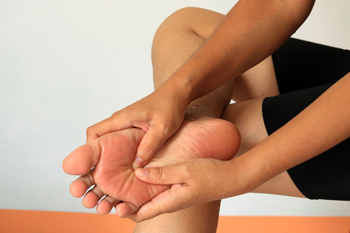 Experiencing a numbing sensation in the feet and toes can be an indicator of Peripheral Artery Disease, also known as PAD. This condition typically develops due to a build-up of fatty deposits on the walls of the arteries. The numbing sensation that is often associated with this condition can be incredibly dangerous, as it can prevent patients from feeling or recognizing injuries to the feet. Scrapes and wounds that are left undetected may lead to an infection. Along with experiencing a numbness in the lower extremity regions, patients with PAD have also noted experiencing symptoms such as coldness and discoloration of the legs and feet. In order to safely treat PAD, please seek the professional care of a podiatrist.
Experiencing a numbing sensation in the feet and toes can be an indicator of Peripheral Artery Disease, also known as PAD. This condition typically develops due to a build-up of fatty deposits on the walls of the arteries. The numbing sensation that is often associated with this condition can be incredibly dangerous, as it can prevent patients from feeling or recognizing injuries to the feet. Scrapes and wounds that are left undetected may lead to an infection. Along with experiencing a numbness in the lower extremity regions, patients with PAD have also noted experiencing symptoms such as coldness and discoloration of the legs and feet. In order to safely treat PAD, please seek the professional care of a podiatrist.
Peripheral artery disease can pose a serious risk to your health. It can increase the risk of stroke and heart attack. If you have symptoms of peripheral artery disease, consult with Dr. Dean D. Hinners from Illinois. Our doctor will assess your condition and provide you with quality foot and ankle treatment.
Peripheral artery disease (PAD) is when arteries are constricted due to plaque (fatty deposits) build-up. This results in less blood flow to the legs and other extremities. The main cause of PAD is atherosclerosis, in which plaque builds up in the arteries.
Symptoms
Symptoms of PAD include:
- Claudication (leg pain from walking)
- Numbness in legs
- Decrease in growth of leg hair and toenails
- Paleness of the skin
- Erectile dysfunction
- Sores and wounds on legs and feet that won’t heal
- Coldness in one leg
It is important to note that a majority of individuals never show any symptoms of PAD.
Diagnosis
While PAD occurs in the legs and arteries, Podiatrists can diagnose PAD. Podiatrists utilize a test called an ankle-brachial index (ABI). An ABI test compares blood pressure in your arm to you ankle to see if any abnormality occurs. Ultrasound and imaging devices may also be used.
Treatment
Fortunately, lifestyle changes such as maintaining a healthy diet, exercising, managing cholesterol and blood sugar levels, and quitting smoking, can all treat PAD. Medications that prevent clots from occurring can be prescribed. Finally, in some cases, surgery may be recommended.
If you have any questions, please feel free to contact one of our offices located in Metropolis and Eldorado, IL . We offer the newest diagnostic and treatment technologies for all your foot care needs.
Read more about Peripheral Artery DiseaseManaging Sweaty Feet
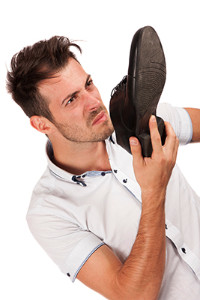 When the feet are kept wrapped up in thick socks and heavy winter boots, sweat is no surprise. Sweat from the feet is a natural occurrence, however there are a number of tips you can rely on to ease sweaty and potentially smelly feet: Take off your shoes as soon as you get home to air out the feet, rotate between shoes and avoid wearing the same pair consistently everyday, and wash the feet thoroughly when bathing, especially after exercise. If you are experiencing sweaty feet all year round, you may have a disorder called hyperhidrosis. Speak with your doctor in order to discuss treatment options for this condition.
When the feet are kept wrapped up in thick socks and heavy winter boots, sweat is no surprise. Sweat from the feet is a natural occurrence, however there are a number of tips you can rely on to ease sweaty and potentially smelly feet: Take off your shoes as soon as you get home to air out the feet, rotate between shoes and avoid wearing the same pair consistently everyday, and wash the feet thoroughly when bathing, especially after exercise. If you are experiencing sweaty feet all year round, you may have a disorder called hyperhidrosis. Speak with your doctor in order to discuss treatment options for this condition.
If you are suffering from hyperhidrosis contact Dr. Dean D. Hinners of Illinois. Our doctor can provide the care you need to attend to all of your foot and ankle needs.
Hyperhidrosis of the Feet
Hyperhidrosis is a rare disorder that can cause people to have excessive sweating of their feet. This can usually occur all on its own without rigorous activity involved. People who suffer from hyperhidrosis may also experience sweaty palms.
Although it is said that sweating is a healthy process meant to cool down the body temperature and to maintain a proper internal temperature, hyperhidrosis may prove to be a huge hindrance on a person’s everyday life.
Plantar hyperhidrosis is considered to be the main form of hyperhidrosis. Secondary hyperhidrosis can refer to sweating that occurs in areas other than the feet or hands and armpits. Often this may be a sign of it being related to another medical condition such as menopause, hyperthyroidism and even Parkinson’s disease.
In order to alleviate this condition, it is important to see your doctor so that they may prescribe the necessary medications so that you can begin to live a normal life again. If this is left untreated, it is said that it will persist throughout an individual’s life.
A last resort approach would be surgery, but it is best to speak with your doctor to find out what may be the best treatment for you.
If you have any questions please feel free to contact one of our offices located in Metropolis and Eldorado, IL . We offer the newest diagnostic and treatment technologies for all your foot and ankle needs.
The Basics of Ingrown Toenails
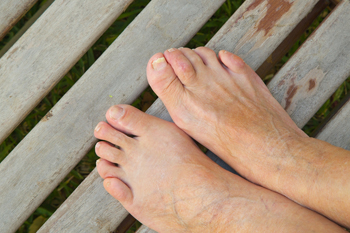 Ingrown toenails can occur in two different ways. Either the edge of the toenail grows into the skin, or the skin grows over the toenail. Signs of ingrown toenails may include swelling and redness on the sides of the toenail, and if infected, pus may drain from the area as well. Ingrown toenails can be caused due to a variety of factors that can include tightly-fitted shoes, thickened toenails, hereditary factors, and abnormally shaped toenails. While experiencing an ingrown toenail may be painful, there are many solutions to help relieve the pain. This can include wearing properly fitting shoes, trimming the toenails straight across and not too short, and by not digging into the sides of the toenail. If the pain persists, or if there is an infection, it is important that you consult with a podiatrist in order to prevent further complications.
Ingrown toenails can occur in two different ways. Either the edge of the toenail grows into the skin, or the skin grows over the toenail. Signs of ingrown toenails may include swelling and redness on the sides of the toenail, and if infected, pus may drain from the area as well. Ingrown toenails can be caused due to a variety of factors that can include tightly-fitted shoes, thickened toenails, hereditary factors, and abnormally shaped toenails. While experiencing an ingrown toenail may be painful, there are many solutions to help relieve the pain. This can include wearing properly fitting shoes, trimming the toenails straight across and not too short, and by not digging into the sides of the toenail. If the pain persists, or if there is an infection, it is important that you consult with a podiatrist in order to prevent further complications.
Ingrown toenails may initially present themselves as a minor discomfort, but they may progress into an infection in the skin without proper treatment. For more information about ingrown toenails, contact Dr. Dean D. Hinners of Illinois. Our doctor can provide the care you need to keep you pain-free and on your feet.
Ingrown Toenails
Ingrown toenails are caused when the corner or side of a toenail grows into the soft flesh surrounding it. They often result in redness, swelling, pain, and in some cases, infection. This condition typically affects the big toe and may recur if it is not treated properly.
Causes
- Improper toenail trimming
- Genetics
- Improper shoe fitting
- Injury from pedicures or nail picking
- Abnormal gait
- Poor hygiene
You are more likely to develop an ingrown toenail if you are obese, have diabetes, arthritis, or have any fungal infection in your nails. Additionally, people who have foot or toe deformities are at a higher risk of developing an ingrown toenail.
Symptoms
Some symptoms of ingrown toenails are redness, swelling, and pain. In rare cases, there may be a yellowish drainage coming from the nail.
Treatment
Ignoring an ingrown toenail can have serious complications. Infections of the nail border can progress to a deeper soft-tissue infection, which can then turn into a bone infection. You should always speak with your podiatrist if you suspect you have an ingrown toenail, especially if you have diabetes or poor circulation.
If you have any questions, please feel free to contact one of our offices located in Metropolis and Eldorado, IL . We offer the newest diagnostic and treatment technologies for all your foot care needs.
What is the Difference Between a Heel Spur and Plantar Fasciitis?
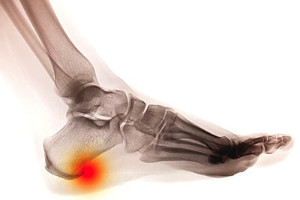 If you experience the pain of a heel spur, it may be mistaken for a plantar fasciitis injury. The symptoms are similar and may include tenderness and pain at the bottom of the heel, and this may cause difficulty in walking. A heel spur is identified as a bony protrusion that extends from the heel bone, and it may often represent a hook. Having an X-ray performed is generally an effective way to differentiate between the two conditions and this will allow the bony growth to be seen. Research has shown that it typically originates from a poor running or walking pattern, shoes that fit poorly, or from obesity, because the heel must endure additional pressure. Effective treatment remedies may include possibly ceasing the activity that caused this injury to occur in addition to performing proper stretching techniques that may provide moderate relief. It’s advised to consult with a podiatrist for additional information about heel spurs.
If you experience the pain of a heel spur, it may be mistaken for a plantar fasciitis injury. The symptoms are similar and may include tenderness and pain at the bottom of the heel, and this may cause difficulty in walking. A heel spur is identified as a bony protrusion that extends from the heel bone, and it may often represent a hook. Having an X-ray performed is generally an effective way to differentiate between the two conditions and this will allow the bony growth to be seen. Research has shown that it typically originates from a poor running or walking pattern, shoes that fit poorly, or from obesity, because the heel must endure additional pressure. Effective treatment remedies may include possibly ceasing the activity that caused this injury to occur in addition to performing proper stretching techniques that may provide moderate relief. It’s advised to consult with a podiatrist for additional information about heel spurs.
Heel spurs can be incredibly painful and sometimes may make you unable to participate in physical activities. To get medical care for your heel spurs, contact Dr. Dean D. Hinners from Illinois. Our doctor will do everything possible to treat your condition.
Heels Spurs
Heel spurs are formed by calcium deposits on the back of the foot where the heel is. This can also be caused by small fragments of bone breaking off one section of the foot, attaching onto the back of the foot. Heel spurs can also be bone growth on the back of the foot and may grow in the direction of the arch of the foot.
Older individuals usually suffer from heel spurs and pain sometimes intensifies with age. One of the main condition's spurs are related to is plantar fasciitis.
Pain
The pain associated with spurs is often because of weight placed on the feet. When someone is walking, their entire weight is concentrated on the feet. Bone spurs then have the tendency to affect other bones and tissues around the foot. As the pain continues, the feet will become tender and sensitive over time.
Treatments
There are many ways to treat heel spurs. If one is suffering from heel spurs in conjunction with pain, there are several methods for healing. Medication, surgery, and herbal care are some options.
If you have any questions feel free to contact one of our offices located in Metropolis and Eldorado, IL . We offer the latest in diagnostic and treatment technology to meet your needs.
More...
Why You Should Strengthen Your Foot Core
 Strengthening the core of the feet is often neglected in training regimes for athletes, with more attention being given to the legs and thighs. But keeping the foot core muscles in good shape is essential, not only for overall foot health, but also for preventing injury. Foot core muscles are responsible for maintaining arch shape and shock absorption. Neglecting this area of the foot can lead to plantar fasciitis and even stress fractures. Typical exercises concentrating on the core include the short foot exercise, big toe press, and toe splay. It’s always a good idea to check in with a podiatrist for further information.
Strengthening the core of the feet is often neglected in training regimes for athletes, with more attention being given to the legs and thighs. But keeping the foot core muscles in good shape is essential, not only for overall foot health, but also for preventing injury. Foot core muscles are responsible for maintaining arch shape and shock absorption. Neglecting this area of the foot can lead to plantar fasciitis and even stress fractures. Typical exercises concentrating on the core include the short foot exercise, big toe press, and toe splay. It’s always a good idea to check in with a podiatrist for further information.
Exercising your feet regularly with the proper foot wear is a great way to prevent injuries and build strength. If you have any concerns about your feet, contact Dr. Dean D. Hinners from Illinois. Our doctor can provide the care you need to keep you pain-free and on your feet.
Exercise for Your Feet
Exercise for your feet can help you gain strength, mobility and flexibility in your feet. They say that strengthening your feet can be just as rewarding as strengthening another part of the body. Your feet are very important, and we often forget about them in our daily tasks. But it is because of our feet that are we able to get going and do what we need to. For those of us fortunate enough to not have any foot problems, it is an important gesture to take care of them to ensure good health in the long run.
Some foot health exercises can include ankle pumps, tip-toeing, toe rises, lifting off the floor doing reps and sets, and flexing the toes. It is best to speak with Our doctor to determine an appropriate regimen for your needs. Everyone’s needs and bodies are different, and the activities required to maintain strength in the feet vary from individual to individual.
Once you get into a routine of doing regular exercise, you may notice a difference in your feet and how strong they may become.
If you have any questions please feel free to contact one of our offices located in Metropolis and Eldorado, IL . We offer the newest diagnostic and treatment technologies for all your foot and ankle needs.
What to Consider Before Bunion Surgery
A bunion is a common foot deformity characterized by a bony bump that forms at the base of the big toe joint. The bump can become inflamed, red, swollen, and painful. It also pushes the big toe out of alignment, so that it is tilted toward the smaller toes instead of pointing straight ahead. Bunions progressively worsen without treatment, and surgery is often the only option to permanently remove them. That said, there are many things to consider prior to making the decision to operate. Certain underlying health conditions, such as diabetes, rheumatoid arthritis, and gout, can increase the risk of complications from surgery. It is also important to think about your lifestyle. Do you intend to wear high heels, exercise, or stand for prolonged periods of time? These factors can help your podiatrist determine if bunion surgery is the right treatment option for you. For more information about bunions, please consult with a podiatrist.
If you are suffering from bunion pain, contact Dr. Dean D. Hinners of Illinois. Our doctor can provide the care you need to keep you pain-free and on your feet.
What Is a Bunion?
Bunions are painful bony bumps that usually develop on the inside of the foot at the joint of the big toe. As the deformity increases over time, it may become painful to walk and wear shoes. Women are more likely to exacerbate existing bunions since they often wear tight, narrow shoes that shift their toes together. Bunion pain can be relieved by wearing wider shoes with enough room for the toes.
Causes
- Genetics – some people inherit feet that are more prone to bunion development
- Inflammatory Conditions - rheumatoid arthritis and polio may cause bunion development
Symptoms
- Redness and inflammation
- Pain and tenderness
- Callus or corns on the bump
- Restricted motion in the big toe
In order to diagnose your bunion, your podiatrist may ask about your medical history, symptoms, and general health. Your doctor might also order an x-ray to take a closer look at your feet. Nonsurgical treatment options include orthotics, padding, icing, changes in footwear, and medication. If nonsurgical treatments don’t alleviate your bunion pain, surgery may be necessary.
If you have any questions, please feel free to contact one of our offices located in Metropolis and Eldorado, IL . We offer the newest diagnostic and treatment technologies for all your foot care needs.
Tired of Getting Cold Feet?
 Cold feet, generally caused by poor blood flow, often increases as we age. Causes can be linked to having a more sedentary lifestyle, obesity, diabetes and smoking. But the sensation of cold feet, while annoying, can also indicate much more serious conditions, such as Deep Vein Thrombosis, or blood clots; hardening of the arteries, or atherosclerosis. These conditions can be life threatening and should not be overlooked. Some ways you can improve circulation to the feet include lowering blood pressure with a healthy diet, getting more exercise, and keeping your feet elevated by using a recliner. If symptoms of cold feet persist, please consult a podiatrist to find out more information on treatment methods.
Cold feet, generally caused by poor blood flow, often increases as we age. Causes can be linked to having a more sedentary lifestyle, obesity, diabetes and smoking. But the sensation of cold feet, while annoying, can also indicate much more serious conditions, such as Deep Vein Thrombosis, or blood clots; hardening of the arteries, or atherosclerosis. These conditions can be life threatening and should not be overlooked. Some ways you can improve circulation to the feet include lowering blood pressure with a healthy diet, getting more exercise, and keeping your feet elevated by using a recliner. If symptoms of cold feet persist, please consult a podiatrist to find out more information on treatment methods.
Poor circulation is a serious condition and needs immediate medical attention. If you have any concerns with poor circulation in your feet contact Dr. Dean D. Hinners of Illinois. Our doctor will treat your foot and ankle needs.
Poor Circulation in the Feet
Poor blood circulation in the feet and legs is can be caused by peripheral artery disease (PAD), which is the result of a buildup of plaque in the arteries.
Plaque buildup or atherosclerosis results from excess calcium and cholesterol in the bloodstream. This can restrict the amount of blood which can flow through the arteries. Poor blood circulation in the feet and legs are sometimes caused by inflammation in the blood vessels, known as vasculitis.
Causes
Lack of oxygen and oxygen from poor blood circulation restricts muscle growth and development. It can also cause:
- Muscle pain, stiffness, or weakness
- Numbness or cramping in the legs
- Skin discoloration
- Slower nail & hair growth
- Erectile dysfunction
Those who have diabetes or smoke are at greatest risk for poor circulation, as are those who are over 50. If you have poor circulation in the feet and legs it may be caused by PAD and is important to make changes to your lifestyle in order to reduce risk of getting a heart attack or stroke. Exercise and maintaining a healthy lifestyle will dramatically improve conditions.
As always, see a podiatrist as he or she will assist in finding a regimen that suits you. A podiatrist can also prescribe you any needed medication.
If you have any questions please feel free to contact one of our offices located in Metropolis and Eldorado, IL . We offer the newest diagnostic and treatment technologies for all your foot and ankle needs.


